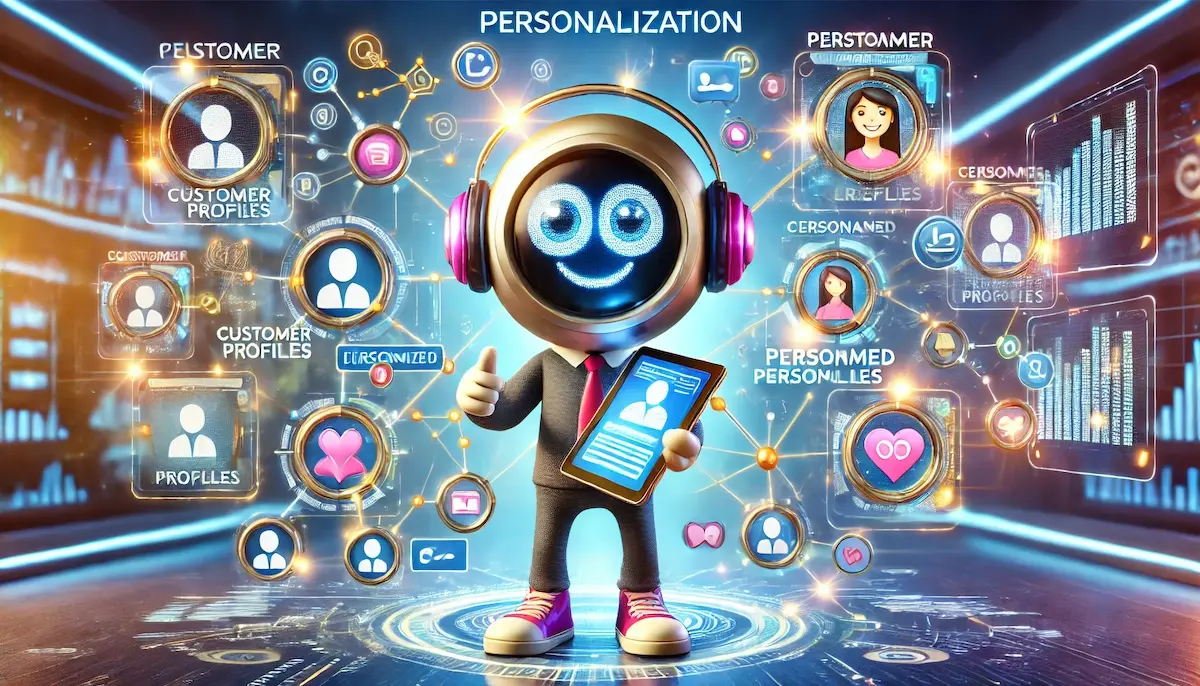Personalization is a strategy that involves tailoring products, services, and experiences to individual users based on their preferences, behaviors, and needs. By leveraging data and technology, businesses can create more relevant and engaging interactions that enhance customer satisfaction and loyalty.
The Importance of Personalization
Personalization is crucial for several reasons:
- Enhanced Customer Experience: Tailored experiences make customers feel valued and understood, leading to higher satisfaction.
- Increased Engagement: Personalized content and recommendations are more likely to capture customer interest and keep them engaged.
- Higher Conversion Rates: Personalized marketing efforts can significantly boost conversion rates by presenting customers with offers that match their preferences.
- Customer Loyalty: Customers are more likely to remain loyal to brands that consistently meet their individual needs and preferences.
- Competitive Advantage: Personalization helps businesses stand out in a crowded market by offering unique and relevant experiences.
Types of Personalization
Content Personalization
Content personalization involves tailoring the content a user sees based on their interests and behaviors. This can include personalized website content, email newsletters, and social media posts.
Product Recommendations
Using data from past purchases, browsing history, and user preferences, businesses can offer personalized product recommendations that are likely to appeal to individual customers.
Email Personalization
Personalized emails address the recipient by name and include content and offers tailored to their interests and behaviors. This increases the likelihood of engagement and conversion.
Personalized Marketing Campaigns
Marketing campaigns can be personalized by segmenting audiences based on various criteria, such as demographics, behavior, and purchase history. This allows for more targeted and effective marketing efforts.
Dynamic Website Content
Websites can dynamically change content based on user behavior and preferences. For example, an e-commerce site might highlight different products for different users based on their browsing history.
Benefits of Personalization
Improved Customer Experience
Personalization enhances the customer experience by making interactions more relevant and enjoyable. Customers appreciate brands that understand and cater to their individual needs.
Increased Sales and Revenue
Personalized recommendations and offers can drive higher sales and revenue. Customers are more likely to make a purchase when presented with products and services that match their interests.
Higher Engagement
Personalized content is more engaging and captures the attention of users more effectively than generic content. This leads to higher engagement rates across various channels.
Better Customer Retention
Customers who experience personalized interactions are more likely to return to a brand. Personalization helps build stronger relationships and increases customer retention.
Data-Driven Insights
Personalization efforts generate valuable data and insights about customer behavior and preferences. This information can be used to further refine personalization strategies and improve overall marketing efforts.
Challenges of Personalization
Data Privacy and Security
Collecting and using customer data for personalization raises privacy and security concerns. Businesses must ensure that they handle data responsibly and comply with relevant regulations.
Integration and Technology
Implementing effective personalization requires robust technology and seamless integration of various data sources. This can be complex and resource-intensive.
Consistency Across Channels
Ensuring a consistent personalized experience across all channels can be challenging. It requires coordination and alignment across different departments and systems.
Avoiding Over-Personalization
While personalization is beneficial, over-personalization can feel intrusive and uncomfortable for customers. It’s important to strike the right balance and respect customer boundaries.
Best Practices for Personalization
Gather and Analyze Data
Collect data from various sources, such as purchase history, browsing behavior, and customer feedback. Use this data to gain insights into customer preferences and behaviors.
Segment Your Audience
Divide your audience into segments based on common characteristics and behaviors. This allows for more targeted and effective personalization efforts.
Use Advanced Technology
Leverage advanced technologies, such as artificial intelligence (AI) and machine learning, to analyze data and automate personalization at scale.
Test and Iterate
Regularly test your personalization strategies to see what works best. Use A/B testing and other methods to measure the effectiveness of different approaches and continuously improve your efforts.
Prioritize Privacy
Respect customer privacy and ensure that your data collection and usage practices comply with relevant regulations. Provide customers with transparency and control over their data.
Future of Personalization
AI and Machine Learning
AI and machine learning will continue to play a significant role in advancing personalization. These technologies can analyze vast amounts of data and provide highly accurate and dynamic personalization in real-time.
Predictive Personalization
Predictive personalization uses data and analytics to anticipate customer needs and preferences before they explicitly express them. This allows for even more proactive and relevant interactions.
Omnichannel Personalization
Future personalization efforts will focus on delivering a seamless and consistent experience across all channels, including online, offline, and mobile. Integration and alignment across channels will be key.
Hyper-Personalization
Hyper-personalization goes beyond basic personalization by using advanced data analytics and AI to deliver extremely tailored experiences. This includes real-time adjustments and highly specific recommendations.
Conclusion
Personalization is a powerful strategy for enhancing customer experience, increasing engagement, and driving sales. By leveraging data and technology, businesses can create tailored interactions that meet individual customer needs and preferences. As technology continues to evolve, personalization will become even more sophisticated, offering exciting opportunities for businesses to connect with customers in meaningful ways.
Blockfine thanks you for reading and hopes you found this article helpful.
